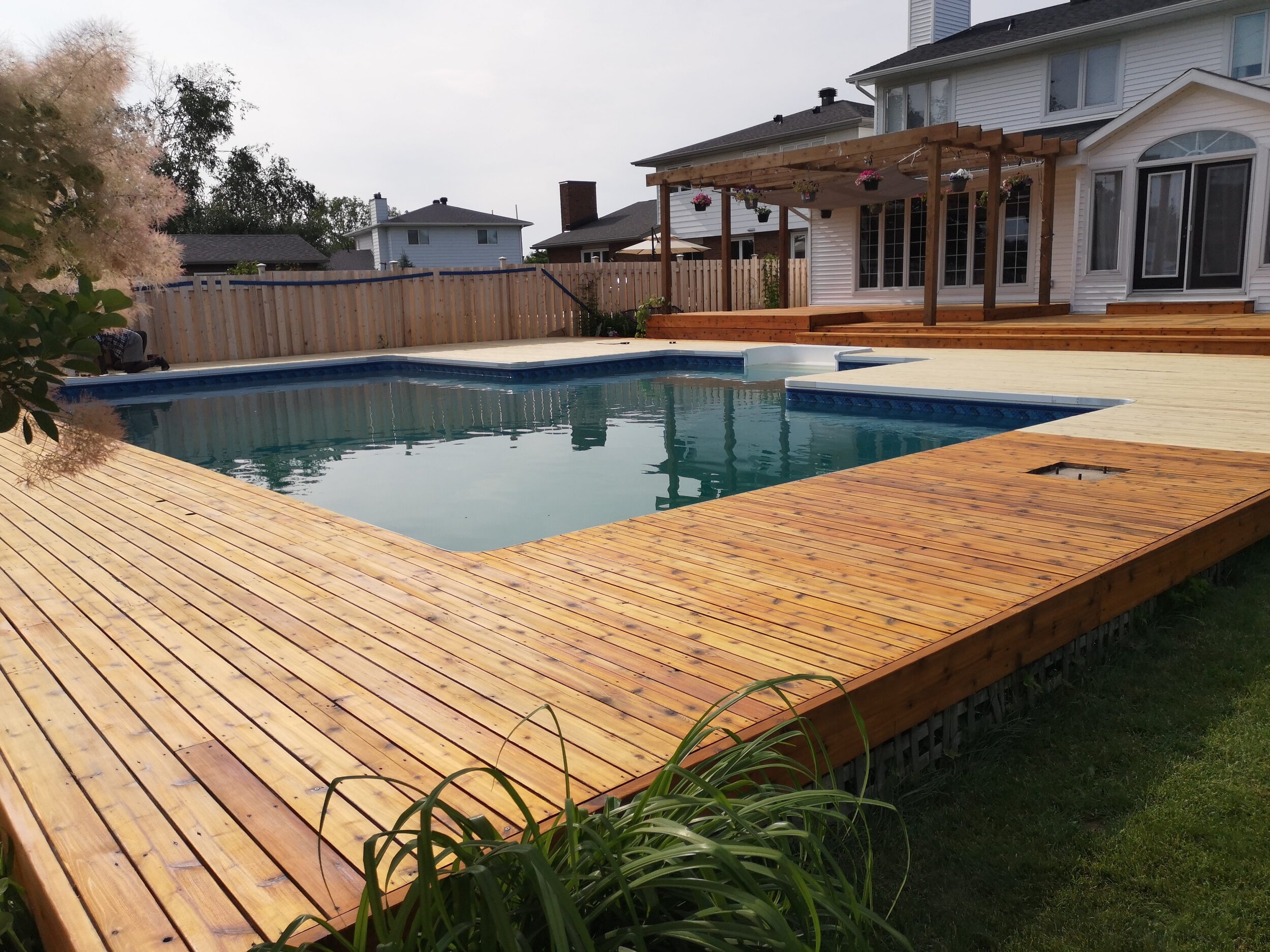Deck Staining Sparkle: Raise Your Outside Living Area
Wiki Article
Choosing the Right Stain for Your Fencing: Tips and Factors To Consider
When it comes to keeping and enhancing the appearance of your fencing, choosing the appropriate tarnish is essential. We will discover the different types of fence discolorations, elements to think about prior to selecting a stain, tips for preparing your fence for discoloration, and the distinctions between water-based and oil-based stains. Furthermore, we will certainly dig right into choosing the ideal discolor shade to complement your fencing and enhance your outside area.Comprehending Various Sorts Of Fence Discolorations

On the other hand, water-based spots are made from acrylic or latex and use an extra refined color to the wood. Water-based stains are simpler to clean up and have a quicker drying time compared to oil-based stains.
Choosing between oil-based and water-based stains relies on various factors, consisting of individual choice, the wanted look, and the level of maintenance required. Oil-based discolorations are advised for fence high-traffic areas or those continuously subjected to extreme climate condition. fence staining and sealing. Water-based stains, on the other hand, are a popular choice for fencings in houses where appearance and ease of usage are necessary
When choosing the best tarnish for their fencing,Understanding the distinctions in between oil-based and water-based discolorations assists property owners make an informed choice. Thinking about the specific requirements of the fencing, such as its place, exposure to sunshine, and desired visual, will ensure that the picked stain gives lasting defense and improves the general appeal of the fencing.
Aspects to Think About Prior To Selecting a Stain

Different kinds of wood take in discolorations in a different way, resulting in differing levels of color strength and sturdiness. In addition, specific timbers might be more vulnerable to problems like rot or insect invasion, which might affect the option of discolor to safeguard and protect the fencing.
The climate and weather in your location must additionally be taken into consideration. You might need a discolor that offers additional security against moisture and UV rays if you live in an area with harsh winter seasons or high humidity. Also, if your fencing is revealed to route sunshine for long periods, a stain with UV inhibitors can assist prevent fading and discoloration.
Finally, it's vital to consider your wanted aesthetic. Various spots use different colors and surfaces, permitting you to customize the look of your fence (fence staining and sealing). Consider the general design and style of your residential or commercial property, as well as any kind of regional laws or homeowner organization standards that may determine the appropriate stain shades
Tips for Readying Your Fence for Staining
To prepare your fencing for staining, beginning by extensively cleaning the surface using a light detergent and a stress washer or scrub brush. Cleansing the fence is an important action as it eliminates dust, gunk, and any kind of previous layers that might interfere with the discoloration process. Begin by moistening the fence with water and afterwards apply a light cleaning agent using a scrub brush or a pressure washer with a low-pressure setting. Rub the surface gently, paying additional focus to areas with persistent stains or mold and mildew. Rinse the fencing thoroughly with tidy water to remove all traces of cleaning agent.This step is vital as tarnishing a damp or moist surface area can lead to bad bond and an irregular coating. Make certain that the fencing is entirely dry prior to proceeding with the staining procedure.
Before staining, examine the fence for any kind of problems, such as loose boards or nails. This product helps to open up the timber pores, enabling the stain to penetrate extra properly and equally.

Comparing Oil-Based and Water-Based Discolorations
When choosing a discolor for your fencing, it is necessary to compare the features and benefits of water-based and oil-based stains. Both kinds of discolorations have their own advantages and factors to consider, so it is vital to recognize the differences in between them.Oil-based stains are known for their toughness and resistance to tear and wear. Additionally, oil-based stains have a tendency to this post last longer than water-based spots, making them a prominent option for fences.
On the other hand, water-based discolorations are more eco-friendly and less complicated to tidy up. They have a reduced VOC (unpredictable organic compound) material, which implies they release fewer damaging fumes into the air. Water-based stains also completely dry much faster, permitting for a quicker application and much less downtime. Nonetheless, they may not offer the same level of security as oil-based discolorations, specifically in extreme climate condition.
Ultimately, the selection between oil-based and water-based discolorations depends upon your certain requirements and preferences. When making your decision, take into consideration elements such as durability, ecological impact, and convenience of application. Consulting with an expert or looking for recommendations from specialists can also assist ensure that you pick the best tarnish for your fence.
Selecting the Right Discoloration Color for Your Fencing
The option of a suitable stain shade for your fencing is an important element of enhancing its aesthetic charm and enhancing the overall style of your exterior room (deck cleaning). The best stain shade can transform a level, common fence right into a striking focal point that includes depth and personality to your residential propertyWhen choosing a discolor color for your fencing, it is essential to consider the style and style of your home. Earthy tones such as neutrals and browns can produce a cozy and inviting look if you have a typical or classic design home. On the other hand, if you have a modern-day or modern home, you could consider choosing for bold and dynamic shades that make a declaration.
Another element to think about is the all-natural surroundings of your residential or commercial property. If you have a great deal of plant, a tarnish color that complements the natural landscape, such as environment-friendlies or deep reds, can produce a natural and harmonious look.
Furthermore, it deserves considering the maintenance required for different stain shades. Lighter colors tend to show dirt and use more quickly, while darker colors can conceal flaws and need much less frequent touch-ups.
Eventually, the option of discolor color for your fence ought to mirror your personal design and preferences - fence staining. Make the effort to check out different alternatives and speak with with specialists if needed, to guarantee that you choose the excellent tarnish color that boosts the beauty and charm of your fence
Verdict
Finally, when it comes to choosing the best discolor for your fencing, it is very important to understand the different kinds of discolorations available and consider factors such as resilience and wanted look. Preparing the fence effectively before staining is essential for accomplishing ideal results. Furthermore, comparing water-based and oil-based discolorations can aid determine the most effective option for your specific needs. Choosing the appropriate tarnish shade can improve the general aesthetic appeals of your fence.We will certainly explore the various types of fencing spots, variables to think about before picking a discolor, tips for preparing your fencing for staining, and the distinctions in between oil-based and water-based stains.Setting apart between water-based and oil-based spots is crucial when recognizing different types of fencing spots. Water-based discolorations are simpler to cleanse up and have a quicker drying out time compared to oil-based discolorations. In addition, oil-based spots often tend to last longer than water-based spots, making them a preferred option for fencings.
In conclusion, when it comes to selecting the right stain for your fence, it is vital to understand the various kinds of spots readily available and consider aspects such as longevity and preferred look.
Report this wiki page